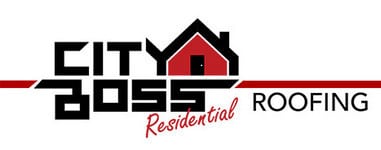
Moss on your roof isn’t just a cosmetic issue – it’s a serious threat to your home’s structure. This is especially true for asphalt shingle roofs, which are common across Canada and especially popular when it comes to roofing in Calgary, AB, due to their affordability, durability, and ability to withstand the local climate. But even the best shingles can fall victim to moss if left unchecked.
In this guide, you’ll learn why moss appears, how to get rid of it effectively, and when it might be too late – leading to a full roof replacement.
Why Does Moss Grow on Roofs?
Moss thrives in damp, shaded, and still environments. Areas with poor air circulation, accumulating leaves, and little sunlight create perfect conditions. Moss often starts subtly but can quickly spread across large sections of your roof.
Canadian weather – especially in humid or coastal regions – accelerates moss growth. Persistent rain, high humidity, and long stretches of cloudy days make your roof an easy target.
Why Is Moss Dangerous?
What looks like a harmless green patch can do major damage over time:
- Traps moisture, which can seep under shingles and damage the underlayment
- Lifts shingles, increasing the risk of leaks
- Creates ideal conditions for mold and fungus, threatening not just the roof but your entire home’s structure
- Accelerates roof deterioration, especially during winter as trapped moisture freezes and expands
If you notice moss on your roof, don’t delay. The longer it sits, the greater the chance you’ll need a full roof replacement – a costly but sometimes unavoidable investment.
And don’t forget the health risks. Mold can begin developing within 24 to 72 hours. Surface mold can often be cleaned, but after two weeks, it may penetrate deeper into the roof’s structure and spread throughout the home. In extreme cases, homeowners abandon their properties due to unmanageable mold infestations. Prolonged exposure can lead to serious health issues – even death.
What starts as a moss problem can quickly spiral into something much worse. Act early.
Step-by-Step Guide to Removing Moss
1. Inspect the Roof
Use binoculars or a drone to check the condition safely from the ground. Look for:
- Bright green or dry, dark patches of moss
- Common growth zones – north-facing sides, near trees or gutters
- Any damaged shingles
2. Choose the Right Day
Pick a cool, dry, overcast day. It’s safer than working in direct sun or during rain.
3. Gather Your Gear
You’ll need:
- A secure ladder
- Safety glasses and gloves
- A plastic scraper or soft brush
- A garden sprayer
- Moss removal solution (store-bought or DIY)
- A garden hose (no pressure washers – they damage shingles)
4. Remove Large Moss Buildup
Gently scrape moss off with your plastic tool. Avoid metal brushes – they’ll damage your shingles. Always work from the top down.
5. Apply Moss Treatment
You’ve got two effective options:
Store-bought solutions:
Wet & Forget, Spray & Forget, and Moss Out are widely used across Canada and the U.S. ✔ Easy to use ✔ Highly effective.
DIY solutions:
- 50% white vinegar + 50% water
- OR: 1 part oxygen bleach + 3 parts water
Spray the mixture on mossy areas, let it sit for 15–30 minutes, then rinse gently with a hose.
⚠️ Never use chlorine bleach – it can destroy shingles and harm surrounding plants.
6. Rinse and Inspect
After soaking, carefully rinse off the moss. Direct the hose downward to avoid forcing water under the shingles.
How to Prevent Moss from Coming Back
Prevention is key to avoiding expensive repairs:
- Install zinc or copper strips along the roof ridge – rain will wash metal ions down, preventing moss growth
- Trim overhanging tree branches to increase sunlight exposure
- Clean gutters regularly and remove leaf buildup from the roof
- Inspect your roof twice a year, especially in spring and fall
When Is It Too Late?
Regular inspections are smart – but in reality, most people notice moss only when it’s too late.
If moss has crept under shingles, caused warping, leaks, or brittle shingles, a spot cleaning won’t fix it. At this stage, a full roof replacement is usually the most sensible solution – especially if your roof is over 15–20 years old.
Moss and mold are like a cancer for your roof: the deeper it spreads, the worse the damage. It’s better to replace the roof once than battle endless repairs year after year.
If your asphalt shingle roof is already showing serious signs of deterioration, don’t waste time or money on temporary fixes. City Boss Roofing specializes in asphalt shingle roof replacements in Calgary and surrounding areas. We don’t remove moss – we replace roofs that are too far gone.
Contact us today for a free estimate on roof replacement cost in Calgary and let our team provide a long-lasting, professional solution tailored to your home.
Conclusion
Moss on your roof is a warning sign you shouldn’t ignore. With timely cleaning and proactive maintenance, you can extend the lifespan of your asphalt shingles. But if moss and mold have already taken hold, it may be time to consider replacing the entire roof.
Canada’s harsh climate demands a roof you can count on. If moss is already making itself at home – don’t wait. Act now.


